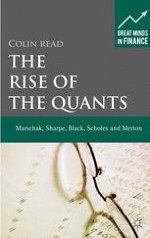2012 | Buch
Über dieses Buch
The third book in the Great Minds in Finance series examines the pricing of securities and the risk/reward trade off through the legends, contribution, and legacies of Jacob Marschak, William Sharpe, Fischer Black and Myron Scholes, and Robert Merton, influencing both theory and practice, answering the question 'how do we measure risk?'
Anzeige
